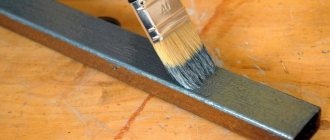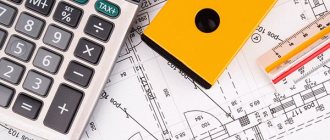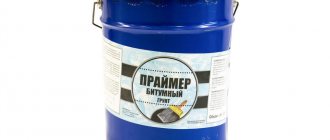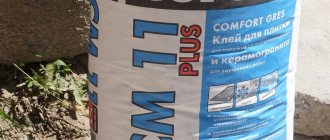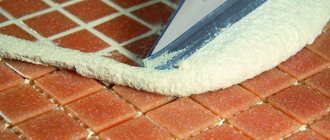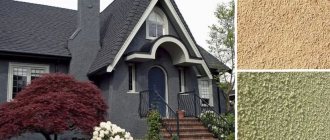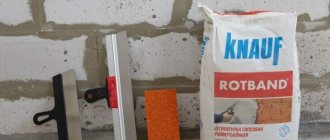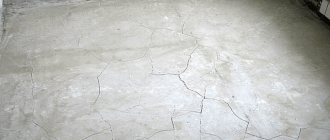Online sheet material calculator
This online calculator allows you to calculate the required quantity of any building sheet materials, such as plywood, OSB, chipboard, fibreboard, MDF, chipboard, plasterboard, laminate, tiles, foam plastic, mineral wool, etc.
Our calculator will be especially useful if you need to calculate the consumption of building materials for:
- construction of a frame house
- renovation with redevelopment
- installation of plasterboard partitions
- calculation of plywood for flooring (floor screed and laying laminate)
- purchasing roofing materials for the roof
- production of removable formwork
- wall insulation
To calculate rolled materials , for example linoleum, we use the “area through sheets” method - we indicate the known width of the roll, set the number of sheets to 1 and change the length until we get the required area.
The weight of plywood is calculated automatically when placing an order through the cart of our online store.
Please note that the calculator calculates the minimum possible consumption, so do not forget about some supply of materials. The consumption of materials can be affected by the number of corners of the working surface, their configuration, the thickness of the seams in the joints between sheets, the amount of overlap, etc.
Directly from this page you can quickly order the materials you need by indicating in the address field the name of the product, the desired sizes and number of sheets.
There is also a section on our website where you can create a cutting map for sheet materials:
All plywood in this video is provided by our company. High-grade sanded birch plywood 6-10-20 mm large format was used
EXPERIENCE
QUALITY ASSURANCE
SERVICE
Rules for applying the primer mixture
Experienced builders advise applying primer mixtures according to the following rules:
- The mixture must be mixed thoroughly. If the consistency is too thick, it is diluted with water according to the technical recommendations specified in the instructions for use.
- The primer is applied with a wide brush or an ordinary flat paint brush. You can use a paint roller or sprayer. Upon completion of work, tools must be cleaned.
- After the soil has completely dried, the surface becomes resistant to mechanical stress.
- When carrying out priming work, do not forget about personal protective equipment.
How to calculate the amount of paint for walls: example and instructions
If the room has a rectangular (square) shape, then the opposite walls have equal area.
a) We calculate the area of the walls that do not contain niches, alcoves, doors, windows: S1 = a*h, S2 =b*h.
b) Determine the area of the wall on which the window is located: measure the width (d) and height (m) of the window.
Drawing of a wall with a window
Wall area for painting S3 = Swalls – Swindows = a*h – d*m.
c) Determine the area of the wall on which the door is located: measure the width (f) and height (c) of the door.
Drawing of a wall with a door
Wall area to be painted: S4 = Swalls – Sdoors = b*h – c*f.
On any can of paint its consumption is written in liters or kilograms (grams) per square meter. It happens that the consumption is not written in liters or grams, but only the area that can be painted with 1 liter of paint is indicated. As a rule, painting is done in several layers. The specified paint consumption is calculated for one coat of paint. If you will be painting several times, you should buy more paint.
So, you have determined that the area of the surface to be painted is 25.5 (m2). On the can we find information about paint consumption per 1 (sq.m), for example - 200 g.
Calculate the required amount of paint:
25.5·200 = 5100g or 5 kg 100g.
Please note that this amount will be used for one layer!
We determine how many cans are needed: divide the mass of paint by the mass of paint in one can.
Let's consider the case when the can indicates the consumption of 1 liter of paint for a certain area.
For example, 1 liter per 7 (sq.m), and the area of the surface to be painted is 25.5 (sq.m).
We determine how many liters are required: 25.5:7 = 3.64, i.e. approximately 4.
We determine how many cans are needed: divide the resulting number of liters by the number of liters in one can.
Calculation of siding and facade panels
How many panels are needed to clad a house? And how much could it cost? Let's count! To begin with, this could be an approximate calculation of siding - offhand, in order to get an idea of the price. And before purchasing panels, you need to make the most accurate calculation possible. We'll tell you how to do it in the article.
If you have already decided on the cladding and want to know exactly how many materials to order, an approximate calculation will not work. Most likely you will get it.
- excess, which means you wasted some of the money;
- shortage, and then you will have to re-order, which means loss of time waiting, downtime for workers, and costs for additional delivery.
To prevent this from happening, take the time to count the panels as accurately as possible.
How to calculate siding?
There are at least 5 ways to calculate panels:
- mathematical
- graphic (using graphics programs)
- graphic (manual)
- on an online calculator
- professional calculation from the manufacturer.
The first method is the most inaccurate. It is suitable for preliminary cost calculation. The rest are quite accurate, but have their own nuances.
In all cases, you need to start with measurements. For an approximate calculation, it is enough to know the height and length of the walls, the number and sizes of windows and doors. To make the results more accurate, you can make more detailed measurements:
- length of walls along the base (or along the bottom edge of the house)
- length of walls along the upper edge (under the roof)
- height of walls in all corners of the house
- exact dimensions of window and door openings.
Let's take a closer look at all the calculation methods.
A mathematical way to calculate the required number of panels
For convenience, we will divide all the walls into simple geometric shapes - squares, rectangles and triangles. And we will calculate each separately.
So we have the dimensions of the wall, windows and doors on it. As an example, let’s calculate the siding for covering a house with a regular rectangular shape. One of the walls will be 6 m long and 4 m high. It has one window measuring 1.2 x 1.5 m and a door measuring 1.5 x 2 m.
We calculate the area of the wall and all openings.
- Wall area: 4 x 6 = 24 sq. m
- Window area: 1.2 x 1.5 = 1.8 sq. m
- Door area: 1.5 x 2 = 3 sq. m
Then we subtract the area of the openings from the area of the wall.
- Area to be covered with siding: 24 – 1.8 – 3 = 19.2 sq. m
Selecting panels for cladding. For example, our house will be covered with Walnut siding from the Canada Plus collection from Alta-Profile. Size of one panel: 3000 x 226 mm. We need usable area in meters: 3 x 0.226 = 0.68 sq. m.
Siding “Walnut” from the “Canada Plus” collection from “Alta-Profil”
Now you need to divide the area for siding cladding by the area of one panel:
- Number of panels for wall cladding: 19.2: 0.68 = 28.2 pcs.
Be sure to add 10-15% for trims:
- 28.2 x 1.1 = 31.02 pcs.
We always round up.
So, to cover one wall of our house we need 32 panels.
To calculate the cost of siding, it remains to multiply the quantity by the cost of one panel. For example, the selected “Walnut” panel in Moscow costs 250.97 rubles. This means the cost of panels for wall cladding:
- 32 x 250.97 = 8,031 rubles.
We calculate the remaining walls in the same way.
An idea may arise to count 2 walls and multiply their cost by 2. But if there are different numbers of windows and doors on opposite walls, this method will not work. And you need to calculate all 4 walls separately.
The resulting cost is not the final price of finishing. We will need a system for fastening the facades and additional strips - starting, finishing, connecting, etc. They will have to be calculated separately.
Additional materials for facade finishing
Graphical calculation method using the editor
If you own any graphic editor, you can calculate the required number of panels using it.
To do this, you need to draw the walls of the house to scale. Then draw a rectangle corresponding to the dimensions of the panel. And cover the walls with siding.
All that remains is to calculate how many panels went into each wall and the house as a whole. This is a fairly accurate way to calculate siding online. The main thing is to maintain proportions.
Calculation of panels in a graphic editor
One more nuance: the panels will probably have to be cut. And you can choose how and where to place partial panels to make the home look harmonious. After all, if the facade panels are connected along the length without additional strips, so that the seams are not visible, then a connecting strip is used for siding, which will divide the facade with a vertical strip.
For example, let's take our house as an example. The length of the wall is 6 m. The length of the selected siding is 3 m. Therefore, we can simply make a strip of connecting strip in the middle of the facade. But if the length of the wall was 6.5 m, then 2 panels and another piece 0.5 m long would have to be connected. Such a trim would not look good from the side on one side. You can make an insert in the middle and divide the facade as follows: 3 m – 0.5 m – 3 m. Or insert facade panels or siding of a different color on the sides of the wall.
This needs to be thought out in advance. And the graphical calculation method is excellent for designing the appearance of the facade.
Important. So that in practice the amount of materials corresponds to your calculations, and the house looks exactly as you intended, save your image of the facade and transfer it to those who will perform the installation.
Graphical method for calculating siding manually
If you don’t use graphic editors, but are good with geometry, you can make a model of the house on paper (it doesn’t have to be three-dimensional - it can be flat, for all walls separately). Then cut out rectangles to fit the panels and fill the house model with them.
When making blanks, be sure to respect the scale!
And experiment in your house. You can even paint the panels and see how the facade will look in the chosen color.
Done? Calculating siding for cladding a house will consist only of counting how many panels you used for your model.
Paint consumption for different surfaces
The actual paint consumption per 1 m2 differs depending on the material: to paint 100 m2 of wood, you may need a whole bucket more than for metal. This should be taken into account when working with large surfaces, explained Kolorit.
- Tree. Paint loss depends on the rock, roughness and porosity of the material. On average, a liter can paint 4-12 m2 of wood surface.
- Metal does not absorb paint; this allows a liter of paint to cover from 8 to 12 m2 of surface.
- Mineral surfaces (concrete, drywall, putty). It all depends on the porosity of the material: the stronger it is, the more paint you will need. The approximate consumption will be 1 liter per 7-12 m2.
- Fiberglass and wallpaper for painting – 7-9 m2.
How GOST standards affect the technical characteristics of the primer composition
GOST performs control functions and includes a number of characteristics that are an indicator of quality. For marking GF 021, a list of these characteristics is included in GOST 25129-82, according to which the consumption rate should be equal to 320 ml per 1 m². Subject to this application condition, the primer provides the treated surface with:
- resistance to atmospheric conditions;
- indifference to sea and fresh water;
- resistance to chemical and oil compounds;
- constancy of external indicators at a temperature range from -45 to +60 °C.
Description of the characteristics of the primer composition
As a result of laboratory tests, it has been proven that when applying a 50 cm layer of GF 021, high impact strength of the primer is achieved (due to film compaction upon drying to 0.35 conventional units) and its elasticity (up to 1 mm). Taking into account the standard conditional viscosity and layer thickness (indicated in the table), the consumption rate can be reduced to 60-100 ml/m² while maintaining the technical characteristics unchanged.
